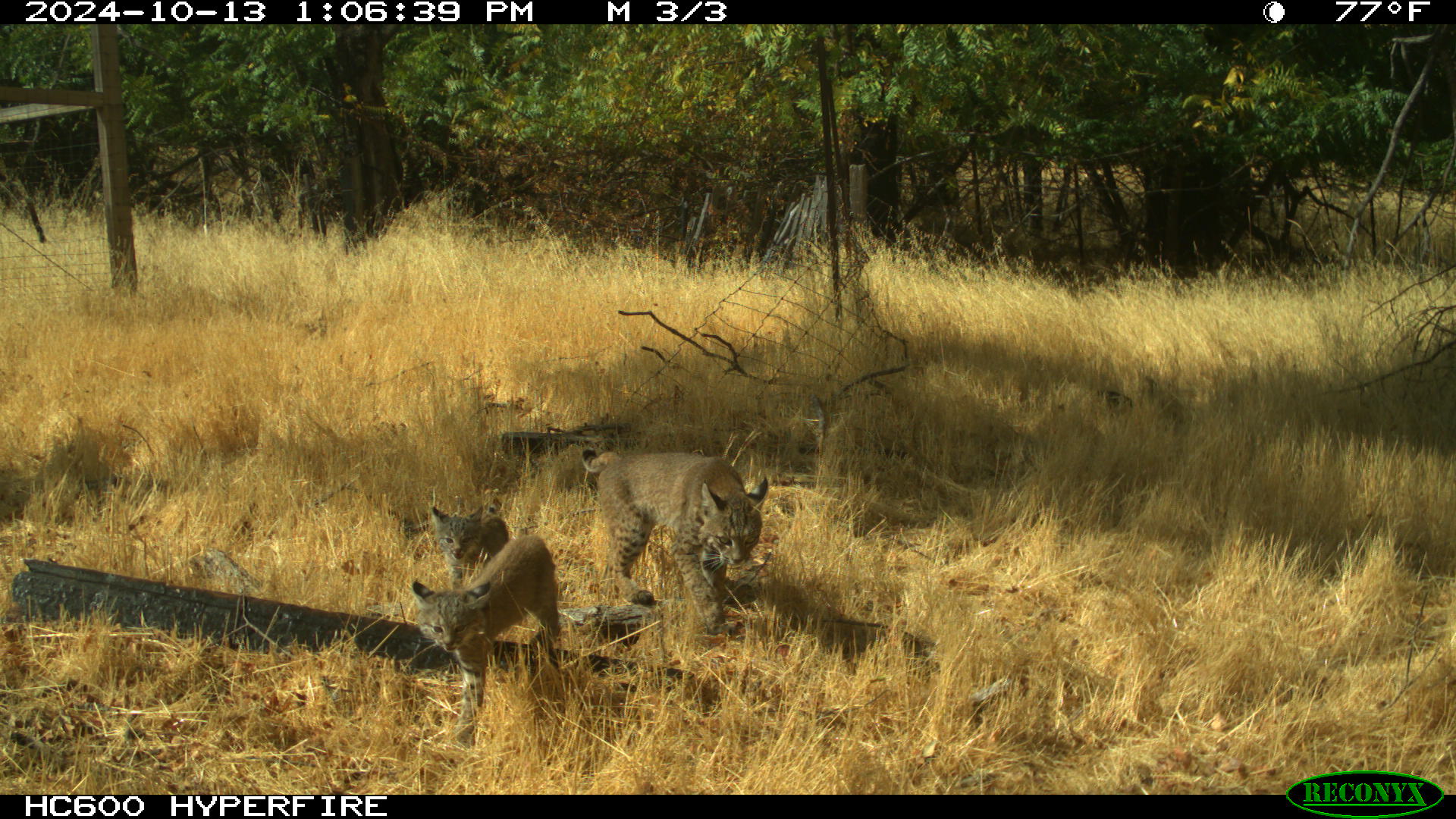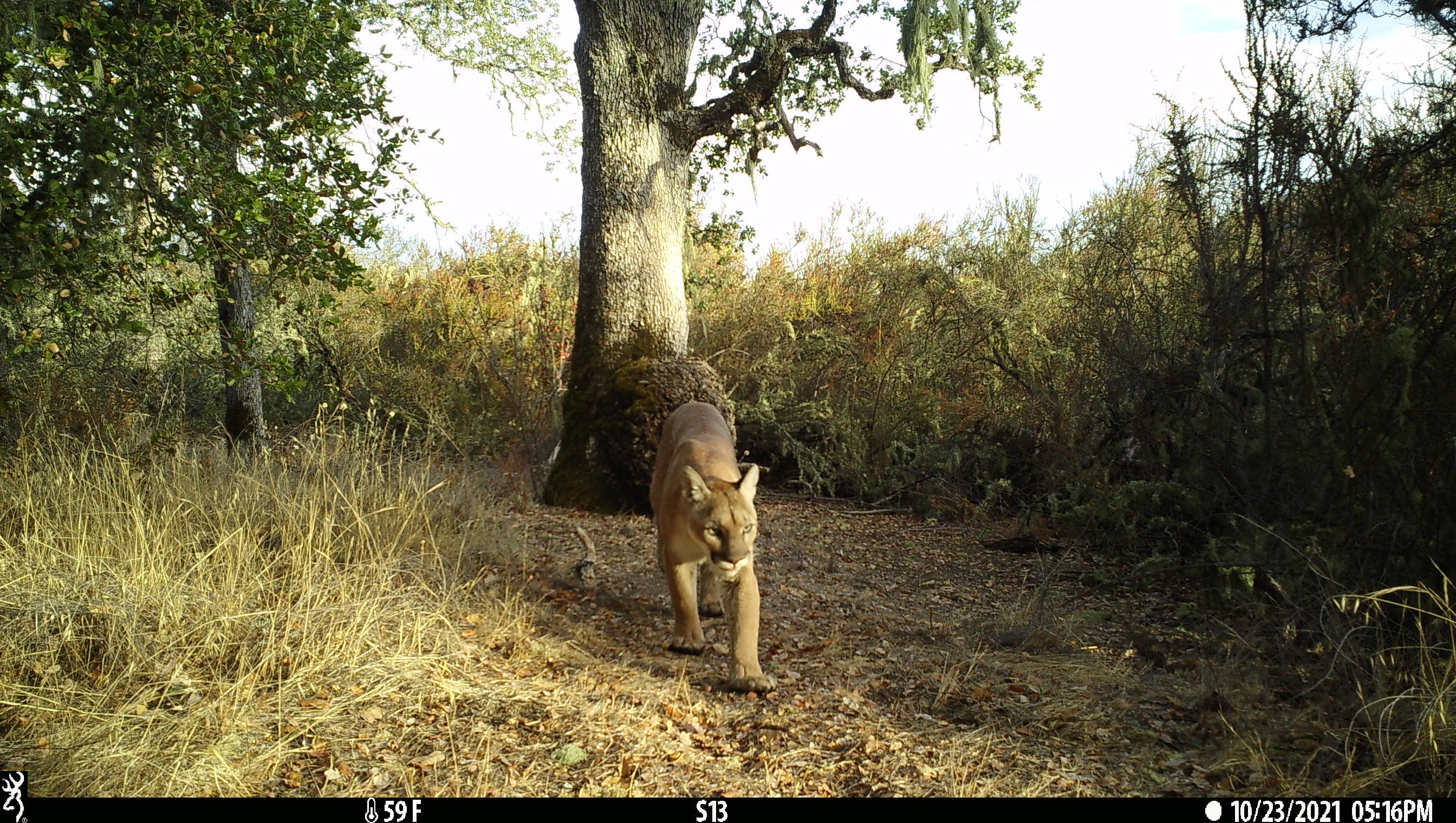As climate change increases the frequency of droughts, UCLA and UC Davis researchers found one overlooked side effect: People report more conflicts with wildlife during drought, when resources are scarce.
For every inch that annual rainfall decreases, scientists found a 2% to 3% increase in reported clashes with a variety of carnivores during drought years, according to a paper published today, Nov. 12, in the journal Science Advances.
The researchers pored through seven years of data from the Wildlife Incident Reporting database, run by the California Department of Fish and Wildlife. The results are likely broadly applicable outside of California, said lead author Kendall Calhoun, a postdoctoral researcher and conservation ecologist affiliated with both UCLA and UC Davis.
"Climate change will increase human-wildlife interactions, and as droughts and wildfires become more extreme, we have to plan ways to coexist with wildlife," said Calhoun, a member of Justine Smith's lab at UC Davis and of UCLA's Tingley lab on ecology and conservation. "Animals coming into human spaces are generally framed as wildlife trying to take resources from humans, but it's often because we've taken the resources away from the wild areas."
Wildlife interactions don't increase with all animals during droughts, but four animals stood out in the data. Across all ranges of precipitation, for every 1-inch decrease in annual rainfall, the researchers found reported conflicts increased:
- 2.1% for mountain lions
- 2.2% for coyotes
- 2.6% for black bears
- 3% for bobcats
What counts as 'conflict'
But what counts as a conflict?
"That's the big question, and it often depends on the person reporting it," Calhoun said. "If you have birds in an agricultural area, they could provide ecosystem services like eating harmful insects, or they could be raiding the crops. One person might have sympathy for wildlife grazing from their tomato garden, while another person might call it property damage."
Actual attacks on people are exceedingly rare and not included in the same database, Calhoun explained. In the study, the researchers analyzed reports to the California Department of Fish and Wildlife highlighting property damage and "nuisances," rather than reports categorized as lower-level "concerns" or "sightings."

Climate-resilient landscapes for wildlife
So are there more coyotes moving through urban areas during droughts? It's hard to say, Calhoun said.
"It's unclear whether the number of reports increases because there are subjectively more conflicts, or because people perceive wildlife more negatively when their own resources are more stressed," he said. "Regardless, it's clear that climate change will mean more conflict between humans and animals if we don't create more climate-resilient landscapes for wildlife."
Studies have shown the benefits of creating such safe zones and other refuges for wildlife. Calhoun anticipates that the resources in those areas could dissuade animals from venturing into more human-dominated spaces.
"Now that we know how droughts make wildlife interactions worse, why couldn't we make them better?" he said. "Mitigating how much water we take out of natural landscapes could mitigate conflict."
There are few comprehensive databases collecting community-reported wildlife incidents, making the CDFW database used for the study a rare and valuable resource, Calhoun noted, without which his research could not succeed. It's an important example of community-driven science, Calhoun said.
Calhoun's research expertise focuses on megafires, and how climate-change driven fire trends influence animal habitats. Animals can often flee the fire itself, but to find food, water and shelter, they have to move into areas protected from the flames - and that often means into human-inhabited areas, Calhoun said.
"I look at ways to improve human-wildlife interactions, and climate change is going to make that path more difficult," Calhoun said. "But if we can make it worse, then we can make it better. People just need to be invested in their local environment to make conservation work."
Subscribe to the Science & Climate newsletter








